Share
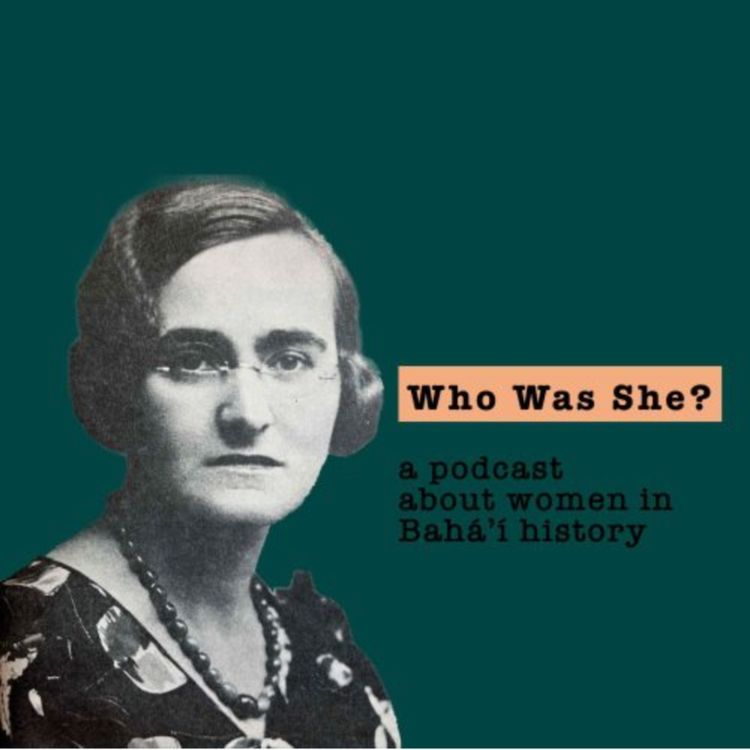
Who Was She?
Lidia Comes to America
For 14 months, Lidia traveled throughout America but her journey was not an easy one. Meanwhile, in Europe, a war was beginning. Learn how American Baha’is and Esperantists tried to keep Lidia away from the war but ultimately, failed.
TRANSCRIPT:
Welcome to Who was she? Podcast where I, Tara Jabbari share the stories of women throughout Baha’i history. This season is about the life of Lidia Zamenhof, an Esperantist and Baha’i who traveled through three continents to teach languages in efforts to bring unity to humankind.
It was 1935 and Lidia had spent more than 2 years traveling through Europe to teach Esperanto. Tuition was twenty francs for forty hours of lessons but Lidia often allowed those who could not afford it to still join her classes. Like her father and brother, who provided health care free of charge, they wanted to be able to still serve any who needed them. It was not easy for Lidia, the tuition was her only form of income. Lidia traveled to Lyon the most and those who attended her courses and got to know her, wrote later on that she was not a talkative person, very modest and never tried to impose herself. Many from her travels and childhood would say the same thing but that when she went onstage to teach, she became another person altogether. Rene Lemaire said she was “a person who was almost invisible in the street, who walked along slowly, looking at the ground. But when she was in the classroom teaching a lesson, she was a lion.”
During the Twenty-Seventh Universal Congress of Esperanto held in August, 1935 in Naples, Italy, Lidia spoke on the subject of free will and destiny.
She said, “Fate is of two kinds: absolute and accidental…According to its destiny, when the oil in a lamp is consumed, the lamp must go out. But it can happen that, even before the oil is gone, by chance a strong wind may extinguish the flame. The absolute fate of man is to come into the world, to mature, and having attained the state of maturity, to begin to age, and finally, when the time comes, to return his body to the earth but it can happen that a brick falls on his head and cuts the threads of his earthly life sooner. We cannot avoid absolute fate, but we can avoid those other causes, and it is wise to guard oneself against them. Man is responsible for all the actions he performs by his own choice. If no free will existed, there would be no responsibility - neither merit nor guilt.
“The greater the suffering, the greater the harvest of spiritual virtues appearing man.
Sometimes happiness makes man self-assured and forgetful. But when sorrow comes, man remembers his smallness and powerlessness and turns upward to the Power above, which alone can save him from his difficulties. And thus his self-assurance dissolved and his spirituality grows…”
Like she had done in the past, Lidia also spoke with the Union of Esperantist Women, urging them not to let children play with war toys, “because the toy of childhood will become a terrible reality in adulthood.” Instead, she urged the women to teach their children about other races and lands. Children should be encouraged to cultivate friendships “not only with children of their own race or people, but with children of other lands, above all, with children of those lands from which they are separated by the barriers of political hatred and prejudice.”
She explained that this can be done easily through Esperanto. Lidia concluded, “Above and beyond the borders a wondrous bridge will be built of the children’s hearts. Upon that bridge the mature generation will meet sometime and build a new, better future.”
Meanwhile, the Universal Esperanto Association felt the pressure that they needed to adapt “to the needs of the times.” The Vice President Anton Vogt was a German member of the Nazi Party. Therefore, about twenty Jewish delegates of the UEA were forced out of their positions. Lidia challenged the Esperantists to fight against this attitude and actions the UEA was enforcing. She wrote in an article called, “Nia misio” or “Our Mission” saying,
“We must not permit national ambitions to raise their heads among us…Esperanto was created so that the peoples should feel equal with each other, not so that through it they should try to raise one about the others…”
In another article she wrote, “It is time …to stand up and proclaim to the whole world that the international language opens not only human mouths and ears but also hearts.”
She knew there was a danger within Esperantists but the Baha’is at least were committed to the ideals of universal peace and unity. If more Baha’is learned Esperanto, it would help ensure the ideology. She wrote for The Baha’i Magazine saying, “The international language is part of the Divine Plan which given effect in the era of Baha’u’llah (the Founder of the Baha’i Faith). And the creation and spread of Esperanto are proofs of the creative power of Baha’u’llah’s words.”
In Northern France, a reporter for Le Petit Havre asked her how she thought an international language might bring about peace.
“We are not naive!” exclaimed Lidia, “We know very well that Esperanto will change neither the face of the world nor the feelings of men but we believe that an international language will contribute powerfully to a better understanding among people, and we also know that without understanding there cannot be love.”
But the world was starting to crumble. By July 15, 1936, there was a decree that all organizations of article languages were to be liquidated in Germany. Without the German Esperantists, and with a civil war breaking out in Spain the next Universal Congress was very small, with only 854 attendings, the smallest congress since 1922. Baha’i activities were also prohibited throughout Germany and the Baha’i National Spiritual Assembly of Germany soon dissolved.
In 1937, a letter arrived for Lidia by the National Spiritual Assembly of the Baha’is of the United States and Canada cordially inviting her to visit America. She had wanted to go for a while and her wish was finally coming true. She would go and teach Esperanto to the Baha’is and connect with the existing Esperantists.
Her spiritual mother, Martha Root would not be able to see her during Lidia’s travels in America due to her own travels abroad. There was another issue. Many American Baha'is, while they believed in the purpose of an auxiliary language, did not want to learn Esperanto as they did not think it was necessary.
Shoghi Effendi, the Guardian of the Baha’i Faith and now a close confidant of Lidia who guided her travels had to explain that while it is not certain that Esperanto is the international language of the future, he did encourage Baha’is to support and study the language, writing, “Baha’u’llah has specified in His writings that such a language will either have to be chosen from one of the existing languages or an entirely new one should be created to serve as a medium of exchange between the nations and peoples of the world. Pending this final choice, the Baha’is are advised to study Esperanto only on consideration of the fact that the learning of this language can considerably facilitate intercommunication between individuals, groups and Assemblies through the Baha’i world in the present stage of the evolution of the Faith.”
On September 29th, 1937, Lidia arrived in New York harbor on The Batory. She was mesmerized by New York’s skyscrapers, traffic and huge groups of people. She wrote, “My legs still wobbled and I still felt the roll of the ship but there wasn’t time to think about that…In America one doesn’t waste time.”
Her presence and her talks amazed many American Baha’is. Many wrote later that she spoke English in “a delightful French accent” and one Baha’i wrote, “(Lidia) has a peculiar quality that I have never run across before. Great simplicity in expression combined with a profound grasp of spiritual reality.”
People were mesmerized and couldn’t get enough of her and her sincerity about the Faith and Esperanto. However, her travels caused her to be ill, eventually, she was diagnosed with jaundice and she had to call off classes for a week.
When she got better, she continued to speak and meet American Baha’is. The growing persecution of Jews were spreading throughout Europe and many hoped that Lidia could stay in the States.
Legally, Lidia was considered a Jew, but she explained that meant nothing spiritually. If she tried to change her legal status, she was worried how it may affect the Polish Jewish community which was already a minority and suffering due to the growing persecution. She wrote to Shoghi Effendi for guidance and waited anxiously. He replied stating “that in view of the fact that such membership as you say, has a rather social and legal significance and does not involve necessarily any definite religious implication, it would not be necessary for you to formally resign from that body at present.” Lidia was relieved, as always, the Guardian and the Baha’i Faith brought her much-needed guidance and comfort. In a letter to a friend, Lidia wrote detailing her spiritual search, “I remember that when I took my first steps in that new Faith, my interest, like the waves of the sea, rose and seemed to fall, but just like waves of the sea, it flowed over my soul always more and more. Now I am like a person who, after great thirst and suffering reach the showers of a sea of sweet water, an ocean full of the water of life - and fears thirst no more.”
By January, Lidia left New York City for Philadelphia, Baltimore, and Washington, DC. American customs were still something she had to get used to. Sometimes, there were misunderstandings but Lidia and particularly her hosts found ways to make that happen less. Her travels led her to the midwest to parts of Michigan, Illinois and Ohio. She was able to see the construction of the Baha’i House of Worship in Wilmette, Illinois, which to date, is still the only one in North America. She wrote to friends, “That Temple gave me very sweet feelings, there I felt as if at home: in my spiritual home.”
Baha’i and friend, Roan Orloff Stone recalled years later, “Lidia had such a love for Baha’u’llah, a love for Esperanto - it was a double love - that you didn’t look at her beauty or her lack of beauty, you just saw her personality; you just saw her soul in her eyes. When the name of Baha’u’llah was mentioned, or the language of her father’s invention, as if through a miracle, her whole personality changed…she forgot her own self as with shining eyes and vibrant voice she launched into discussion or recounted her experiences in her field of service.”
Lidia was very involved in almost every place she visited in America amongst Baha’is and Esperantists. She and Roan were even recruited to act in a play about the earliest believers in the prophet, The Bab, the Predecessor to Baha’u’llah. Lidia portrayed Zaynab, a peasant girl who fought for the right of religion by disguising herself as a boy and was consequently killed
With the help of the American Baha’is, she requested an extension to stay in the States. However, she was denied after learning that by earning a profit received for her Esperanto classes, she had broken the law under the permit that she applied to enter the country with. Lidia was puzzled and embarrassed. She never knowingly broke the law. It turned out that this was a cause of a series of oversights, one being the American Counsel in France for not making the matter clear to Lidia from the start. The American Baha’is who organized her trip could also share the blame for not having obtained the proper paperwork which would have explained that Lidia was not allowed to accept any form of payment while in the United States. A combination of these and other factors caused so much trouble for Lidia in the States and ultimately, one might argue her life.
There was a saying shared to her, Baha’is tried to scramble a thought of how they can keep Lidia at least away from Poland where the war was growing. They decided to have Lidia apply for a visa to be in Canada. Alas her application was. denied. After the initial shock and fear at the reality that she must go back to Poland Lidia wrote, “It is a real disappointment for me, very painful, but we must accept serenely what comes and trust that God guides us on the way that is most right for us.”
Lidia left on November 29th, 1938 after 14 months in the United States, giving and receiving tearful farewells to all the friends she made in America. It was a hard time for her and for them, as the world was so uncertain but also because she had come to love the Americans and found a new family there.
On the same month that she was due to leave, President Roosevelt announced that European refugees already in the United States on a visitors’ visa would not be forced to return to their countries where they might face persecution. Overall, twenty thousand people were able to take advantage of this immigration policy but Lidia was not one of them.
While in America, Lidia wrote an essay called, “The Ways of God.”
“Why did suffering and pain have to be a part of man’s development? Through oppositions and deficiencies, we learn to judge the value of everything.”
“In fact, do we recognize and enjoy the value of health when we are well? Usually, respect for health only comes with illness. We realize the value of sight when we are blinded…we learn the value of hearing when we can no longer enjoy music and conversation with our fellows. We realize the value of peace when war weighs over our heads. We realize the sweetness of home when ashes cover the home hearth or fate forces us to leave it…Even the nearness of our dear ones we usually only learn to value when separation comes.”
Lidia returned to her homeland and along with many of her family, would not survive the war. Next episode, we will talk about her time during the war and the several failed attempts to save her life.
This has been Who was she? Podcast, follow us on our Instagram, Facebook and Pinterest @whowasshepodcast. And please, rate and subscribe wherever you listen to this podcast. Logo was designed by Angela Musacchio. Music was composed and performed by Sam Redd. I am your host, Tara Jabbari.
More episodes
View all episodes
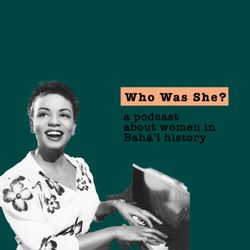
8. Bonus episode! BTS on Hazel Scott
27:39||Season 3, Ep. 8A conversation with host Tara and her friend, Angie. Learn how this podcast season came about, the challenges, the creative process, the people who helped make this season, and hear a sneak preview of who the next season will be about!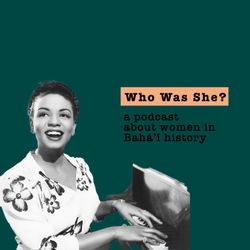
7. Moved To Her Feet
10:59||Season 3, Ep. 7Partial Transcript: Welcome, I am your host, Tara Jabbari. Who was she? Podcast will focus on the stories of women throughout history that were active in the Baha’i Faith. This season is about Hazel Scott, a talented musician and activist. She had evolved in her faith. Having been introduced to the Baha’i Faith by her good friend and famous jazz artist, Dizzy Gillespie, she was interested in learning more. She was particularly intrigued by “progressive revelation.” This is the belief that Manifestations of God represent stages in the spiritual evolution of civilization. These Manifestations include Abraham, Moses, Krishna, Buddha, Zoroaster, Christ and Muhammad. Or as she explained, “Whenever man has been ready to absorb more knowledge, God has revealed it.” Baha’u’llah is the Manifestation of the Baha’i Faith.Hazel fought nonstop for what was right, she achieved many firsts and her talent was truly one of a kind. In one of the last interviews she ever did, she was asked what is the most important part in her life. Hazel replied, “The important part? When I have been able to transmit that which I have been singularly gifted with…to move an audience to their feet.” I hope you enjoyed learning about Hazel Scott, I certainly did and hope you are inspired and moved to your feet just like she would want.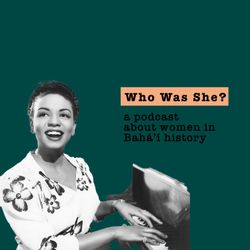
6. Hazel's Paris
09:16||Season 3, Ep. 6Patrial Transcript: Recovering from the dissolution of her marriage as well as a second suicide attempt, Hazel was determined to move on with her life in Paris. The French film industry was interested in Hazel. Now that she felt she had earned more maturity and life experience, she was comfortable actually acting in a role. So she went on set for Le Desordre et la Nuit (Disorder of the Night) where she played a supporting role as a dancer. It was the first time she was playing someone other than herself on screen. Her son shared that after the first day of filming, Hazel came home and announced, “Your Mother does not speak french!” According to Skipper, he knew there was trouble whenever she began a sentence with “your mother.” It turned out that her accent needed work, not necessarily her language skills so the studio got her a french dialect coach. That same day, they got the news that Harry Cohn, the president of Columbia Pictures had died. She explained to the cast and crew the whole story of Cohn and his promise that she would never make another movie until the day he died. And now, years after his promise, he died and she was on a set filming. It would become one of her favorite stories to tell, no longer would Cohn threaten her career on the big screen. Hazel went on to film a couple of other french films. Very nearly including Paris Blues with Sidney Poitier & Paul Newman but ultimately the part went to another. She was still synonymous with being a musician even on the big screen. Hazel said, “Once you played the priest, you can never play the gangster…Everybody just wants me to come on and sing. And I can do so much more than that.”
5. A Great Act of Faith
07:29||Season 3, Ep. 5Partial transcript: Between 1950 to 1952, Hazel had nearly lost her reputation and her life. The Red Scare and the HUAC hearings put a toll on her career. The growing attention on her marriage, the loss of work in the United States, and the constant public attention caused Hazel to have a mental breakdown and attempt suicide. Thankfully by May 1952, Hazel was doing better through the best medical care her husband could find her. She was performing and showing the world that nothing could stop Hazel Scott and her immense talent. Paul E. Magliore, the President of Haiti invited Hazel to attend the 150th anniversary of Haiti’s independence. Hazel gladly accepted as she was an anti-colonialist and felt a kinship with the Haiti people. When years later, Trinidad, her birth country became a free country, her son remembered Hazel went screaming through the house, “We’re free! We’re free!” In 1955, Hazel wanted to go back to Paris and Adam encouraged the move but would not join her. They already were drifting apart from their marriage and now, they were physically apart. They hadn’t been happy for a while. Adam suggested an open marriage but it was not necessarily to save their marriage. He wanted to keep his family man image for his political look with the freedom of spending time with other women. Hazel did not agree to the proposal. She said, “I couldn’t face a marriage of convenience, especially if it was at my inconvenience.” Deeply unhappy with the state of her marriage, she decided faith would be the only thing that could help.Learn and listen more:https://shows.acast.com/who-was-she-podcastAlso available on:https://podcasts.apple.com/us/podcast/who-was-she/id1548368026https://www.amazon.com/dp/B08JJS5J2T/ref=cm_sw_em_r_mt_dp_H6paGbTR63EK9https://open.spotify.com/show/78a4pv6tYgad4C0mEftAgBYou can also find more information on our social media:http://instagram.com/whowasshepodcasthttps://www.facebook.com/whowasshepodcasthttps://www.pinterest.com/whowasshepodcast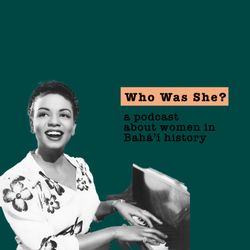
4. They Saw Red
10:23||Season 3, Ep. 4Partial Transcript: After Hazel had married Congressman, Adam Clayton Powell Jr. her music career changed from late-night jazz to a more conservative, classical approach which proved to be very successful. Hazel said goodbye to 1945 and to her mother Alma but 1946 brought new life. On July 17th, Hazel gave birth to a son, Adam Clayton Powell The Third, or affectionately called, Skipper. She said, “My greatest thrill was the first time I saw Skipper.” Adam and Hazel were both very busy but they made sure they would be home on weekends. During the week, a housekeeper cared for their son. Skipper, later on, said, “They decided to try to have as normal a life as possible. (Dad) would be in Washington during the week at least January through May, and (Mom) would be traveling a lot but on Saturday and Sunday, we were going to be a family. And so wherever they were, the deal was they would have to get back to New York by Friday night.”The Powells were famous, being a celebrated and high-profile black power couple. However, behind closed doors, it was not easy, Hazel admitted, “We fought bitterly but loved each other deeply.” She confessed that she did think of ending her marriage in the first year. The constant pressure of everyday life, their bustling careers, and their public persona along with the death of her mother and a new baby were all so much for Hazel. She tried to repress her emotions which would eventually end with almost dire consequences. Along with all of her responsibilities and attention, she still dealt with constant racism. Learn and listen more:https://shows.acast.com/who-was-she-podcastAlso available on:https://podcasts.apple.com/us/podcast/who-was-she/id1548368026https://www.amazon.com/dp/B08JJS5J2T/ref=cm_sw_em_r_mt_dp_H6paGbTR63EK9https://open.spotify.com/show/78a4pv6tYgad4C0mEftAgBYou can also find more information on our social media:http://instagram.com/whowasshepodcasthttps://www.facebook.com/whowasshepodcasthttps://www.pinterest.com/whowasshepodcast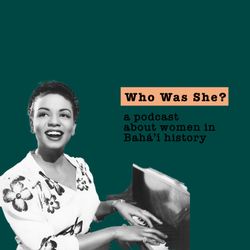
3. Adam Clayton Powell Jr .
10:25||Season 3, Ep. 3Partial Transcript: By the 1940s, Hazel Scott was touring the country, known for her unique style of piano and singing, combining classical music with jazz. Her short film career was now cursed by Columbia Picture’s head Harry Cohn. “I have always been a very strong feminine creature,” Hazel said, “and to subdue me a very, very strong masculine creature is required.” Enter Adam Clayton Powell, Jr. He was born on Nov 29th, 1908. When his family moved from Connecticut to Harlem, he had his first brush with racism. The Powell family were mostly light-skinned of African, European and Native American ancestry. His lighter complexion did often lead to bullying, with one block of black children and another block of Italian and Irish children demanding to know if he was white or black. In order to survive, Adam became what people needed him to be, black in black crowds and white in white crowds. This chameleon-like adjustment was the beginning of his natural charisma that would make him a successful politician. Learn and listen more:https://shows.acast.com/who-was-she-podcastAlso available on:https://podcasts.apple.com/us/podcast/who-was-she/id1548368026https://www.amazon.com/dp/B08JJS5J2T/ref=cm_sw_em_r_mt_dp_H6paGbTR63EK9https://open.spotify.com/show/78a4pv6tYgad4C0mEftAgBYou can also find more information on our social media:http://instagram.com/whowasshepodcasthttps://www.facebook.com/whowasshepodcasthttps://www.pinterest.com/whowasshepodcast
2. The Darling of Cafe Society
10:46||Season 3, Ep. 2Welcome to Who was she? Podcast. I am your host, Tara Jabbari. After a decade working in documentaries, marketing and all things digital media, I found that podcasting is a strong medium to share stories and after years of producing for others, I decided to start my own biographical podcast. Who was she? Podcast will focus on the stories of women throughout history that were active in the Baha’i Faith. This season is about an incredible and often overlooked talented musician, and activist, Hazel Scott.Learn and listen more:https://shows.acast.com/who-was-she-podcastAlso available on:https://podcasts.apple.com/us/podcast/who-was-she/id1548368026https://www.amazon.com/dp/B08JJS5J2T/ref=cm_sw_em_r_mt_dp_H6paGbTR63EK9https://open.spotify.com/show/78a4pv6tYgad4C0mEftAgBYou can also find more information on our social media:http://instagram.com/whowasshepodcasthttps://www.facebook.com/whowasshepodcasthttps://www.pinterest.com/whowasshepodcast
1. Presence of a Genius
08:16||Season 3, Ep. 1Welcome to Who was she? Podcast. I am your host, Tara Jabbari. After a decade working in documentaries, marketing and all things digital media, I found that podcasting is a strong medium to share stories and after years of producing for others, I decided to start my own biographical podcast. Who was she? Podcast will focus on the stories of women throughout history that were active in the Baha’i Faith. This season is about an incredible and often overlooked talented musician, and activist, Hazel Scott.Learn and listen more:https://shows.acast.com/who-was-she-podcastAlso available on:https://podcasts.apple.com/us/podcast/who-was-she/id1548368026https://www.amazon.com/dp/B08JJS5J2T/ref=cm_sw_em_r_mt_dp_H6paGbTR63EK9https://open.spotify.com/show/78a4pv6tYgad4C0mEftAgBYou can also find more information on our social media:http://instagram.com/whowasshepodcasthttps://www.facebook.com/whowasshepodcasthttps://www.pinterest.com/whowasshepodcast
Trailer for Season 3: Hazel Scott
03:31||Season 3, Ep. 0Welcome to Who was she? Podcast. I am your host, Tara Jabbari. After a decade working in documentaries, marketing and all things digital media, I found that podcasting is a strong medium to share stories. After years of producing for others, I decided to start my own biographical podcast. Who was she? Will focus on the life of a woman throughout Baha’i history. The third season is about Hazel Scott.Transcript: Born in 1920 and originally from Trinidad, Hazel was raised in Harlem and when she was only 8 years old, she was accepted as a pianist protegee at the prestigious Julliard School. Her mother was also a musician and artists over the years became Hazel’s extended family. For instance, Pianist, Art Tatum was a father figure, saxophonist, Lester Young an uncle and singer, Billie Holiday was a big sister to Hazel to name a few. When she was a teenager, she started singing and playing across Manhatten. She became a regular at a new club, Cafe Society. Unlike other clubs at the time where black musicians played primarily for white patrons, this club was based on equality and diversity which made it like no other club in New York City at the time. When she toured, she was adamant to only play in places that did not segregate the audience. This limited her venues but she kept her stance. She married Adam Clayton Powell Jr, an activist and politician which heightened both their fame. This season, you will hear how she was blacklisted from working in the United States because of the McCarthy trials, cursed from working in Hollywood, and how her search for faith helped her fight depression and find the strength to be strong in the face of racism. So please subscribe and learn about this amazing woman who used her unique musical abilities to entertain and educate the world about racial equality. You can also found more information on our social media: http://instagram.com/whowasshepodcasthttps://www.facebook.com/whowasshepodcasthttps://www.pinterest.com/whowasshepodcast